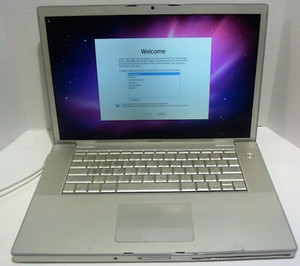


I'm not sure if I did something wrong in re-assembling it, or maybe Apple purposely tweaked the fan settings for problem-prevention.Ģ007 MacBook Pro 15 inch.
#MACBOOK PRO MID 2007 OSX UPDATE#
But I also did an OS update right after that. The MBP has been working fine now for several months of constant use. (The problem resumed after the first bake, a few days later). UPDATE 5-16-16: I had to do the oven treatment twice. That is, you, the table, and every tool should be grounded. Be sure to use anti-static tools and work area so you don't 'zap' your electronics. Go thru every nook and cranny, especially around the ICs. Instead of high heat, you can take out the circuit board, and use a soft brush and vacuum cleaner to dislodge and suck up the whiskers. You have to remove these before a heat-treatment. That heat could damage certain parts - battery, aluminum electrolytic capacitors, beepers/buzzes/speakers. To melt tin whiskers - each & every one - you probably need to go to 425 F. Tin whiskers is another possible problem. This is what the internet videos are doing - with a hair-dryer or oven. But a lower temperature like 300 deg-F can solve problems - relieve stressed joints, close small cracks. Unfortunately, some products made during the mid-to-late-2000's that had passed QC and got shipped out, then failed after some years of use and stress (thermal cycling=turning on/off, humidity, bending, etc.). The industry eventually learned, after a few years. Lead-Free Solder is very particular about how it's used and treated, or you end up with bad joints, or short circuits (over time, from tin whiskers). The world electronics assembly industry was forced to switch in mid-2000's from tin/lead solder to Lead-Free (mostly just tin) Solder. If the hot-air treatment works, I guess it's because your problem came from use of Lead-Free Solder in manufacturing.


 0 kommentar(er)
0 kommentar(er)
